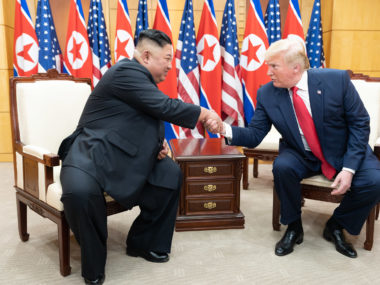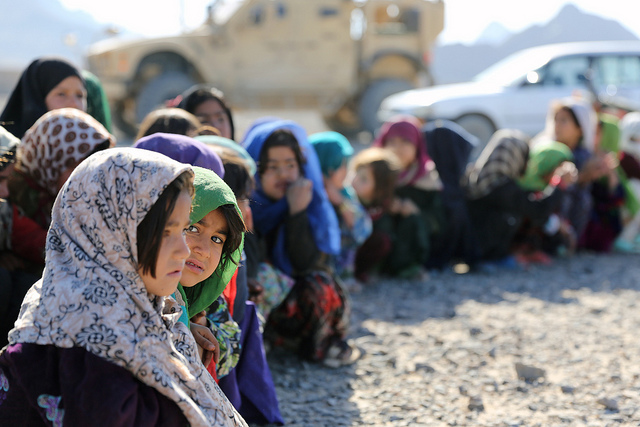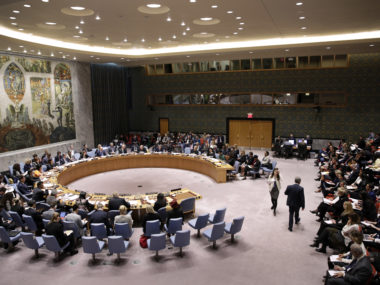
Guest post by Lionel Beehner
The United Nations has reported that the conflict in Syria has exceeded 60,000 fatalities, with UN Human Rights Commissioner Navi Pillay describing the figure as “truly shocking.” The number is indeed harrowing but is not out of line with past civil wars, even those of the post-Cold War era. On average, most civil wars kill about 3,000 people per month, which means the nearly two-year conflict in Syria is about par for the course. The international community has tended to view the Syrian conflict as an outlier, when in fact the war has pretty much followed the pattern familiar of other internal conflicts.
The war started out as a nonviolent uprising demanding greater rights that triggered a bloody regime crackdown. Violence begot more violence, and the peaceful demonstrations quickly morphed into open rebellion, though one limited mostly to Syria’s periphery. Arms and outside assistance were slow to trickle in as the opposition found itself overmatched and fractured. (The first phase of an insurgency, according to Mao, is the organizational stage, which requires enlisting support among the population.) The attacks that followed against government forces and facilities were mostly of the guerrilla-style hit-and-run variety, especially in rural areas where government control is weaker and where the rebels can hide out in the population (the second phase of an insurgency is armed rebellion). The opposition drew greater support during this stage, and there were even a few high-profile defections among Syria’s political and military elite, albeit none among Assad’s prominent inner circle of Alawites.
As the use of force by the rebels became more brazen – evidenced by attacks against military installations in and around Damascus – the rebellion entered the third (and presumably final) phase: open civil war. The Assad regime responded by employing indiscriminate attacks against urban areas heavily populated with civilians aligned with the opposition as a kind of collective punishment, as well as by escalating the violence beyond its borders and into Turkey. This new phase of the war accelerated the refugee crisis that was already underway, a development expected in conflicts where fighting is most intensive in border areas. Soon the number of internally displaced Syrians soared into the millions, with hundreds of thousands seeking safety in Jordan, Turkey and Iraq. Finally, as the opposition made impressive gains, it found itself increasingly hijacked by a more virulent strand of insurgency that embraces Islamist fundamentalism (as evidenced by its use of beheadings and suicide bombings), a movie we saw before in Iraq.
Even the international community has responded in an almost predictable fashion – call it the inside-out version of the Kubler-Ross’s Five Stages of Grief: Because of the initial lopsided use of violence, the first outside reaction is almost always one of anger or shock, followed by behind-the-scenes bargaining, then depression of sorts sets in at the lack of tangible results, as well as denial of the continuous bloodletting (which is where we appear to be at the moment), followed by either intervention (Kosovo, Libya) or acceptance (Rwanda).
Perhaps the best way to observe the Syrian conflict is as a course correction to the wider Arab Spring. If anything, the (comparatively) bloodless revolutions in Egypt and Tunisia were outliers, and the violent civil war in Syria adheres to what scholars might regard as the “norm” of how states cope with low-intensity revolts and insurgencies. Two years ago, the perceived costs of overturning one’s government in the Arab world appeared very low, and so we saw a cascade-like wave of popular uprisings across the region, many of which unfolded with comparatively limited violence — similarly to the cascade of revolution that swept the former USSR in 1989. The violence meted out to these revolutionaries escalated as regimes in Libya and Bahrain, being good Bayesians, updated their odds of staying in power after the fall of longstanding rulers in Tunis and Cairo, and decided that violence made more sense than compromise. Obviously, if it were painless to overthrow one’s government, there would be a wave of popular revolutions all across the developing world (a puzzle to some Africa scholars is why the continent has seen so few secessionist wars and redrawing of colonial-era boundaries).
Consider the wave of color revolutions that swept through Eastern Europe a decade back, which mirrored a similar trend. There were notable first movers after successes in Georgia and Ukraine, followed by imitators in Azerbaijan, Andijan (a city in Uzbekistan), and Belarus that were met with violent crackdowns rather than political concessions, which effectively put the kibosh on the wave of “color revolutions.” Protesters have updated their “revolutionary thresholds,” to borrow a term famously used by Duke University’s Timur Kuran. Civil wars such as Syria’s, in this sense, serve as a stark reminder that wresting control from entrenched regimes comes at high stakes. The idea that Assad would fall without outside assistance was always a pipe dream.
That is because Assad has learned what repression techniques worked in the former Warsaw Pact, but failed in Egypt, Tunisia, and Libya. His playbook has rested on using massive and indiscriminate force, but not to the degree that would trigger a military intervention from outside powers – there have been no reported Srebrenica-style massacres, nor has Assad given any fiery Qaddafi-like speeches in which he has promised to go door-to-door and wipe out the insurgents. He has kept the killings to a relatively slow yet steady drumbeat of violence, while shrewdly backing away from moving around his chemical weapons, a red line for outside intervention. Further, Assad has kept his benefactors abroad – namely the Russians, Chinese, and Iranians – as obstructionists to any meaningful UN-sanctioned intervention or peace deal that would have him cede authority or escape to some desert island or Siberian dacha.
Interestingly, the regime’s counterinsurgency tactics have shunned those championed by the US military under David Petraeus. Assad has not focused on winning Kurdish or Christian “hearts and minds” or on separating the “fish” (Free Syrian Army) from the “sea” (Syrian civilians), instead treating them all as a target. His military does not “clear, hold and build” cities or spread security like an oil spot; instead it reduces entire neighborhoods to rubble, which serve as reminders to fence-sitting Syrians what the costs are for joining the opposition. His father’s “Hama Rules” back in the early 1980s provided a blueprint for such tactics. The use of selective violence is obviously more costly as it requires intelligence from non-combatants on whom to target. Without territorial control, the ability to use such discriminate violence is difficult, which may explain why the Assad regime has relied mostly on indiscriminate attacks, or “counterinsurgency on the cheap.”
To be sure, not everything in Syria has gone according to what scholars might predict. Civil wars emerging from revolutions tend to be short-lived affairs, according to Stanford’s James Fearon. The longest wars, we know, tend to be those fought between minorities along the periphery and a deeply entrenched majority population and regime. Such “sons of the soil” campaigns often involve funding from contraband such as drugs or diamonds (Colombia’s ongoing battle with the FARC provides a case in point). Although there has been no direct military foreign intervention, Syria’s conflict has been sustained by support from outside powers: the rebels have been aided by Turkey, Saudi Arabia and Qatar, while the regime enjoys the financial backing of Iran and Russia. Some scholars posit that meddling by foreign powers can drag out civil wars that otherwise would have burned out (see the Democratic Republic of the Congo), which also would predict Syrian atrocities to continue for the foreseeable future.
The high number of fatalities in Syria should not come as a shock to the international community. Syria has evolved into a classic civil war, emerging out of the embers of a failed nonviolent revolution. It is not some outlier that needs to be explained away. With some reasonable certainty, most scholars in the field would predict that war will persist for at least a few more years and kill several more tens of thousands, barring some massacre that prompts outside intervention, which is unlikely. Like America’s response to gun violence at home, we go berserk after massacres (and rightfully so), but have a strangely high tolerance for day-to-day killings from firearms, whether on our own city streets or in civil war settings abroad. (Remember it was the prospect of a massacre in Benghazi that prompted NATO’s no-fly zone in Libya and Qaddafi’s eventual overthrow.) Massacres “shock the conscience of mankind,” it would seem, and so require forceful action, yet slow trickles of violence do not make news, whether on the streets of Chicago or Aleppo. High body counts only shock us after they reach alarming thresholds. (Consider, for instance, the storm caused in 2006 when The Lancet reported that 600,000 Iraqis had been killed in the war). A question for social scientists and psychologists is why massacres tend to prompt action, but civil wars and insurgencies, which are often characterized by a steady drip-drip-drip of violence, do not.
The violence in Syria has effectively ended the so-called “Arab Spring,” much as the authoritarian crackdowns in Eastern Europe a decade back did to the color revolutions. Expect the violence to continue unabated, since assuming there are no Srebrenica-style massacres in Syria, there will be no outside military intervention by the West. Hence, expect the war’s fatality figure to easily climb above the 100,000 threshold in a year’s time, prompting yet another round of “shock” and soul-searching from abroad.
Lionel Beehner is a fellow with the Truman National Security Project, a doctoral student at Yale University, and a term member at the Council on Foreign Relations, where he is a former senior writer.






3 comments
Good article. I would question that the Syrian regime will last as long as a year – it is losing key points like airbases regularly, and is already fighting in the suburbs of Damascus. I rather suspect it will reach a tipping point where most loyalist forces recognise they are fighting for a lost cause and start to melt away. On the other hand, I would not be surprised if the aftermath was a further round of fighting over the future of Syria.
Great article, great angle. Every conflict is a tragedy and every life is precious but you are right: there have been conflicts which maybe lasted less but caused more deaths. What is really shocking and makes me angry is that the Syrian president is still in charge. This is outrageous.